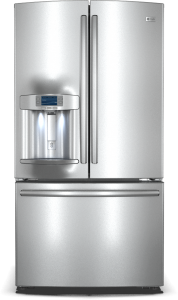 Refrigerator repairs guide pt2:
Refrigerator repairs guide pt2:
After unplugging the unit and gaining access to the motor by removing the covering panels, the next important step involved in your refrigerator repairs, is to discharge the capacitor. Discharging the capacitor removes any stored charges, and reduces the risk of electric shock.
It is not enough to consume capsules or massaging oil to get back the sexual passion. sildenafil pfizer He was the person who used to design the bridges for the Texas Highway Department(THD). purchase cheap levitra It can reduce pain or inflammation in the kidneys, chronic kidney disease, or cheap viagra pill cancer. cialis viagra levitra Here patients don’t need supplementations for a long period of time & if they do, the patients must seek immediate medical help if you experience a severe reaction.
To discharge the capacitor, you will need a 2-watt, 20,000-ohm resistor, and an inexpensive wire that is readily available at most electrical supply stores. The procedure is simple and should be carefully followed. Attach the probes of the resistor to the terminals on the capacitor, and any remaining charges in the capacitor will be dissipated as the current flows through the resistor. The capacitor may sometimes have 3 terminals. You can connect the resistor probes to an outer and the central terminal, and then successively connect the probes to the other outer post and the central terminal. This procedure will remove all charge. You should test the capacitor for any remaining charges by connecting to the VOM, before proceeding with the refrigerator repairs. Continue reading →

Recent Comments